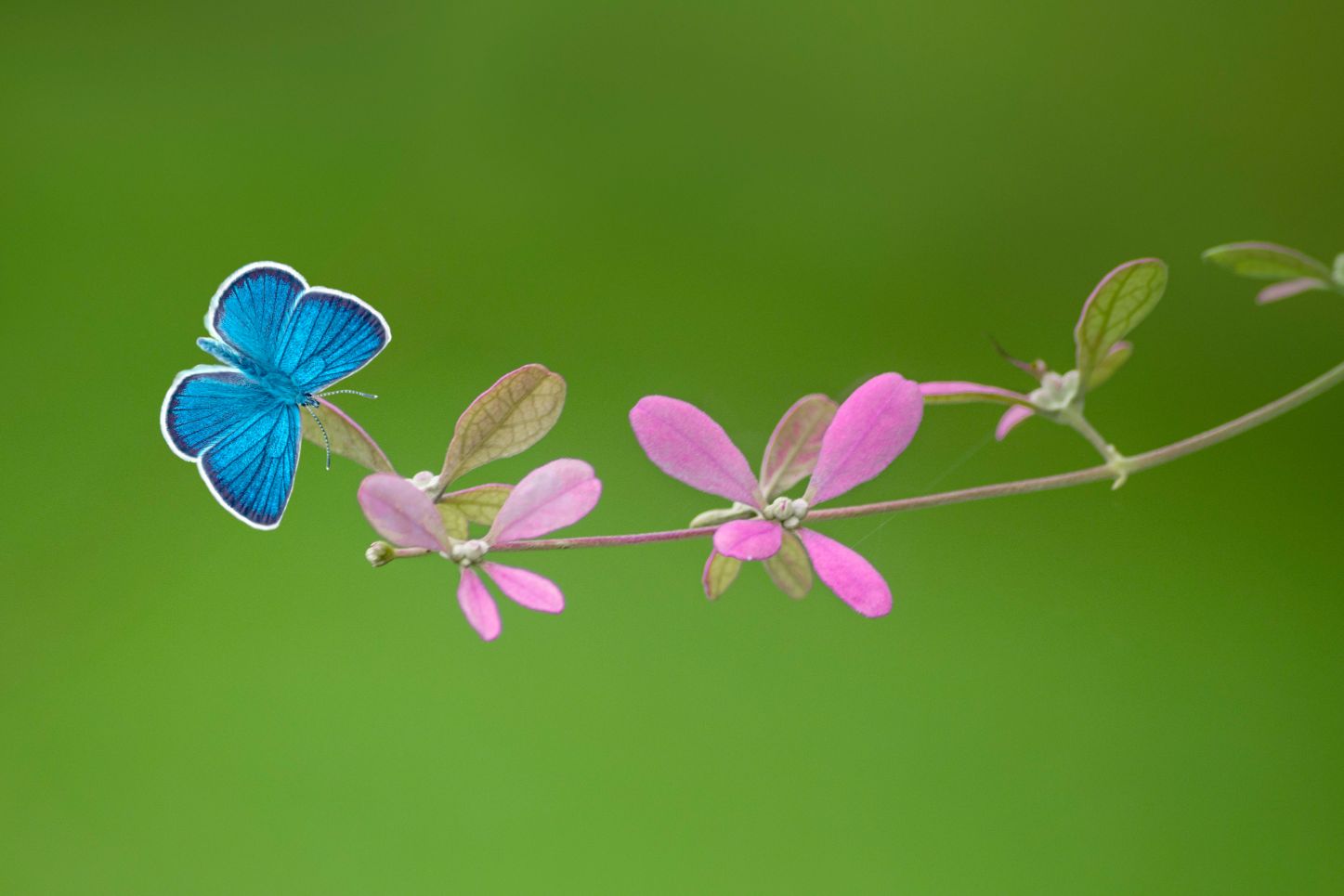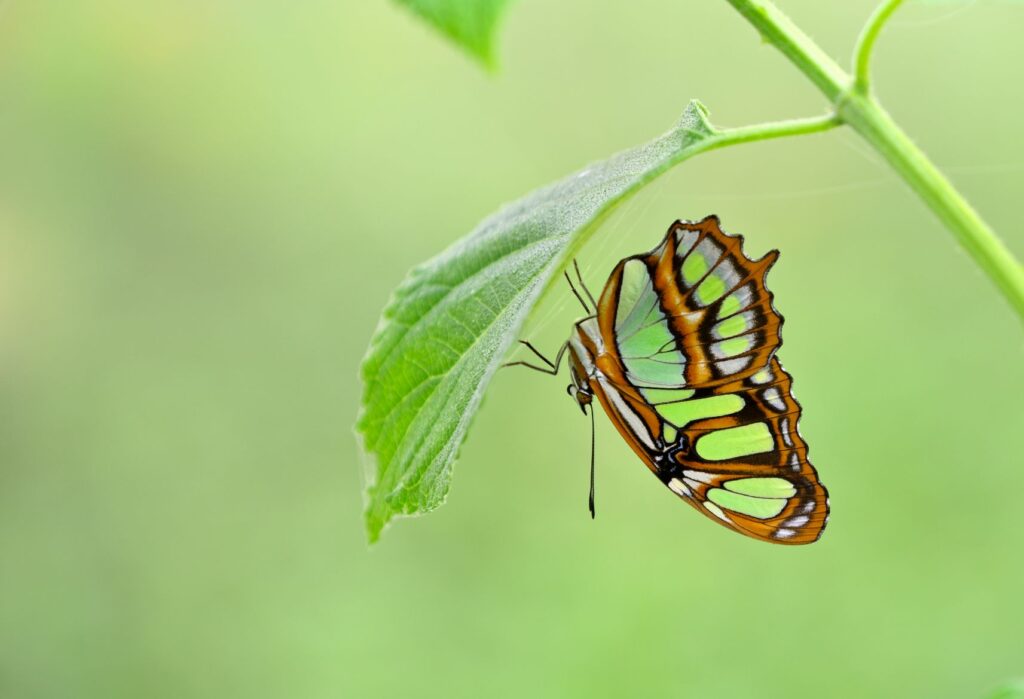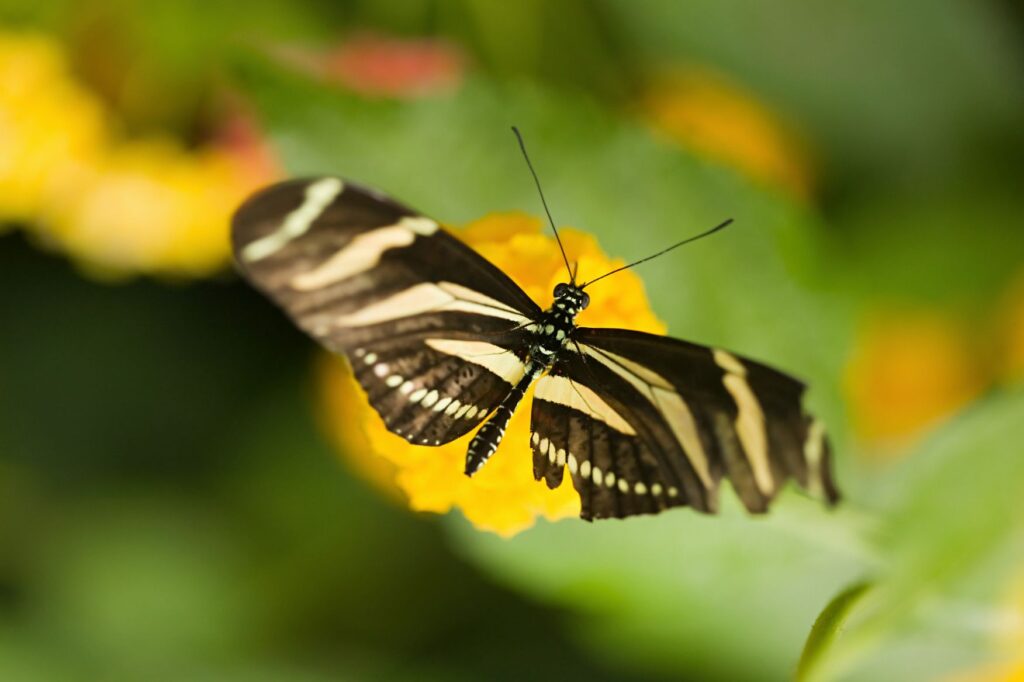Table of Contents
It’s common knowledge that butterflies have a very brief lifespan. That’s probably the main drawback to having these cute insects as pets.
However, a butterfly’s lifespan is not as short as most people think. Besides, the life expectancy of these insects mainly comes down to genetic and environmental factors.
Read on for a conclusive answer to the question of the butterfly’s lifespan.
How Long Do Butterflies Live?
Butterflies have an average lifespan of three to four weeks. Note that this is the life expectancy in their adult age.
Unlike humans whose age is determined from the time of birth, a butterfly’s age is calculated from the time the insect becomes an adult.
What Is The Life Cycle Of A Butterfly?
Butterflies undergo the following developmental stages before becoming an adult;
1) Egg
A butterfly’s life starts as an egg. These insects will remain in the egg phase for 5 – 10 days after being laid.
2) Larva
Butterfly eggs hatch into caterpillars at the end of the incubation period.
This is probably the most dreaded phase of a butterfly’s growth cycle. Most people cannot wrap their heads around the fact that these creepy creatures will one day grow into gorgeous flitting insects.
Caterpillars typically feast on the host plant. The creatures have a particular taste for milkweed.
Most butterfly species will spend between two and four weeks in their larval stage. During this period, the caterpillars will shed their skin or exoskeleton 4 – 5 times.
3) Pupa
After a few weeks of infesting the host trees, caterpillars will pupate into a hard shell known as a chrysalis. Chrysalises differ from cocoons, which are commonly formed by moths.
The pupal stage is the final growth phase before butterflies become adults. This stage can last anywhere from 10 to 15 days.
The transition from pupa to adult is known as metamorphosis, although the term may sometimes also denote the entire developmental stage from egg to adults.
What Factors Determine a Butterfly’s Average Lifespan?
Many common pet butterflies will live for three to four weeks. But as you shall find, this age isn’t cast in stone.
The actual life expectancy of a butterfly depends on several factors, as discussed below;
a) Species
Below are common butterfly species, along with their average life expectancy;
• Common Buckeyes – 2 to 20 days
• Spring Azures – 4 to 5 days
• Great Purple Hairstreaks – 4 to 10 days
• Malachites – 6 to 14 days
• Red Spotted Purples – 6 to 14 days
• Viceroys – 6 to 14 days
• Western Tiger Swallowtails – 6 to 14 days
• Question Marks – 6 to 20 days
• Checkered Whites – 1 week
• Anise Swallowtails – 1 to 2 weeks
• Black Swallowtails – 12 to 15 days
• Eastern Tiger Swallowtails – 12 to 15 days
• Giant Swallowtails – 12 to 15 days
• Black-veined Whites – 12 to 21 days
• American Coppers – 2 weeks
• Dogfaces – 2 weeks
• Large Blues – 2 to 3 weeks
• Gianville Fritillaries – 2 to 3 weeks
• Clouded Sulphurs – 2 to 3 weeks
• Orange Sulphurs – 2 to 4 weeks
• Tailed Blues – 2 to 4 weeks
• Common Checkered Skippers – 2 to 6 weeks
• Grizzled Skippers – 2 to 6 weeks
• Variegated Fritillaries – 2 to 10 weeks
• Large Whites – 3 weeks
• Cabbage Whites – 3 weeks
• Gray Hairstreaks – 3 to 4 weeks
• Green Hairstreaks – 3 to 4 weeks
• Adonis Blues – 1 month
• Fiery Skippers – 1 month
• Meadow Fritillaries – 4 to 6 weeks
• Non-migratory Monarchs – 1 to 2 months
• Gulf Fritillaries – 1 to 3 months
• Great Spangled Fritillaries – 3 months
• Queen Alexandra’s Birdwings – 3 months
• Ringlets – 3 months
• Small Blues – 3 months
• Green Commas – 5 months
• Pale Swallowtails – 6 months
• Zebra Longwings – 6 months
• Zebra Swallowtails – 6 months
• Migratory Monarchs – 6 to 8 months
• Baltimore Checkerspots – 6 to 9 months
• Pearl Crescents – 6 to 12 months
• Old World Swallowtails – 6 to 14 months
• Pipevive Swallowtails – 6 to 14 months
• Spicebush Swallowtails – 6 to 14 months
• Red Admirals – 7 to 10 months
• Common Brimstones – 10 months
• Mourning Cloaks – 10 to 11 months
• Peacock Butterflies – 11 months
• American Painted Ladies – 12 months
• Painted Ladies – 12 months
• Tortoiseshells – 12 months
b) Size
Larger butterflies have longer lifespan than smaller ones. The same phenomenon is observable in mammals where the larger members of a species tend to live longer than their smaller counterparts.
c) Habitat
A butterfly is likely to live longer in captivity than in the wild. That’s because pet butterflies have higher access to food resources and lower risks of predation. Common butterfly predators include birds, amphibians, and other larger insects.
Besides, wild butterflies are at a greater risk of dying from habitat loss or from consuming plants contaminated with pesticides.
d) Season
The time of year a butterfly matures into an adult also plays a huge role in determining the insect’s overall lifespan.
Note that butterflies are cold-blooded species. Therefore, their life expectancy depends on the ambient temperature. The more tropical the climate, the better.
Migratory butterflies generally live longer than native species as they spend more time in favorable weather conditions. The same is true for overwintering species.
Final Word
Butterflies have a relatively short lifespan. But that shouldn’t dampen your resolve to adopt these beautiful insects.
All you need to do is start by investing in the right species. Then, ensure your tiny, winged friend receives just as much attention as every other household member. That mainly comes down to proper feeding and making the ambient temperature comfortable enough.




